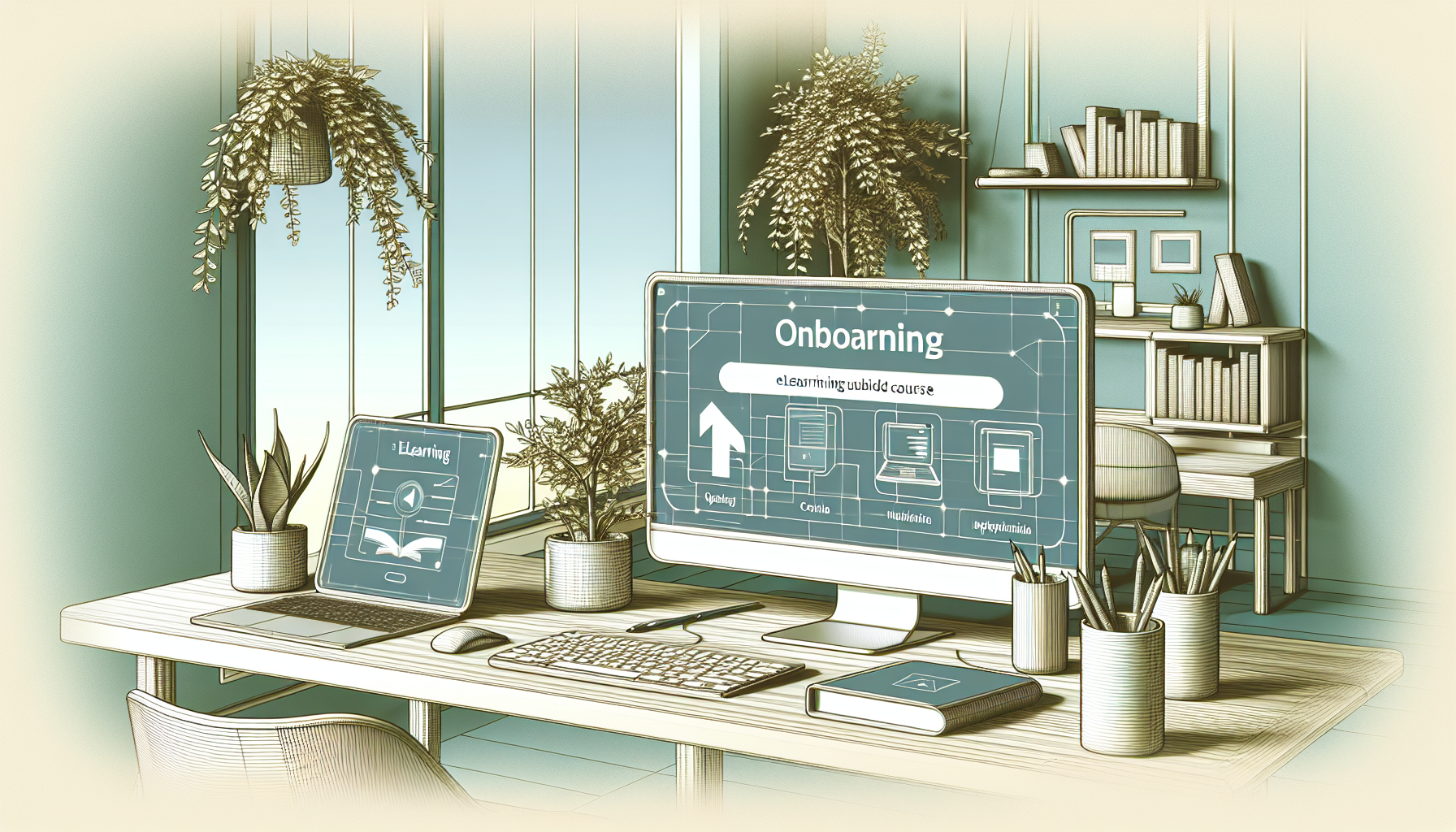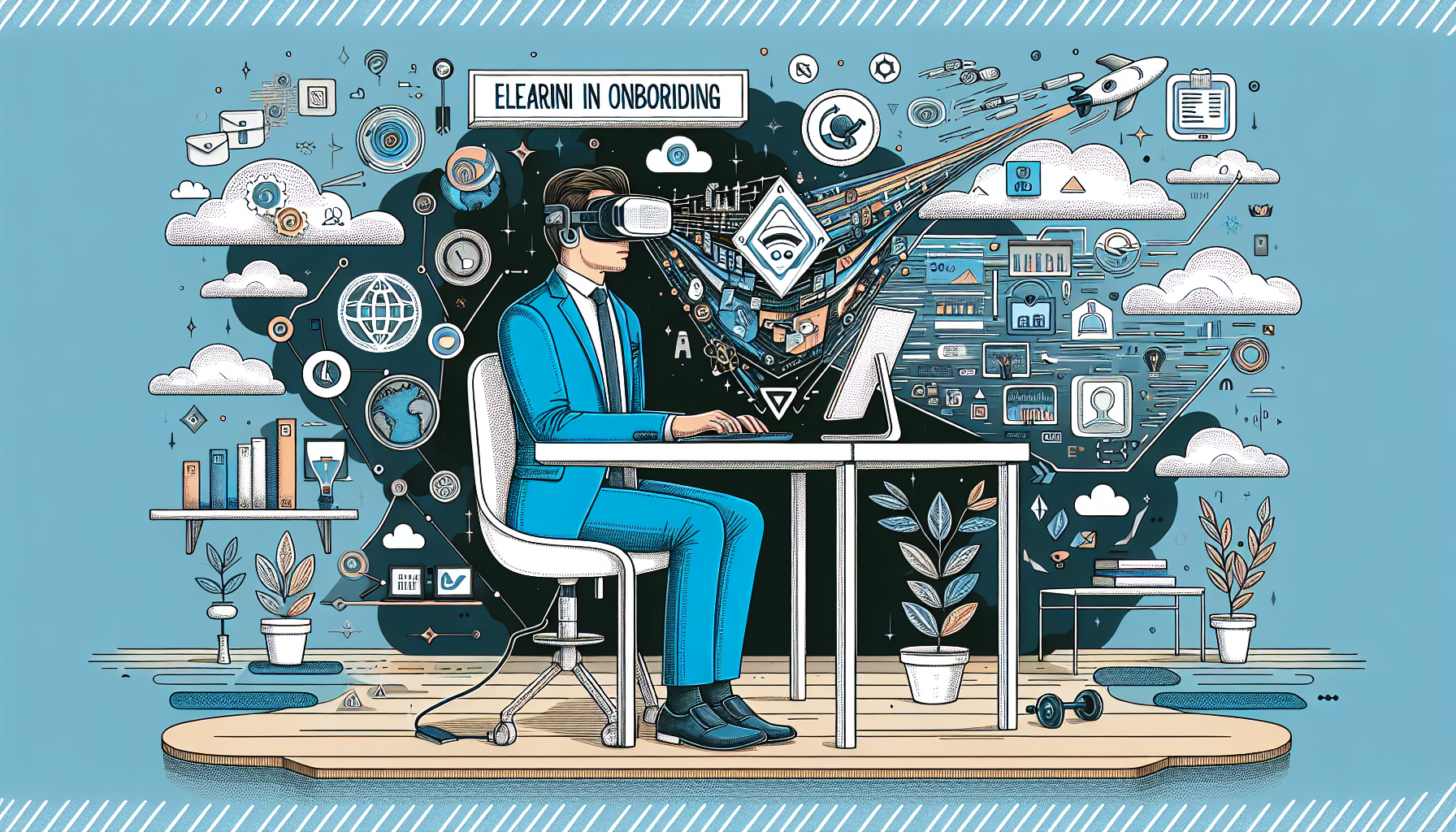Transitioning new hires into your company can sometimes feel like trying to fit a square peg into a round hole. We all know that traditional onboarding can be a bit dry and overwhelming, leaving new employees feeling lost and disengaged. Wouldn’t it be great if there was a way to make this process smoother and more enjoyable?
Well, you’re in luck! In the following sections, we’ll explore how eLearning can transform your employee onboarding experience, making it not only efficient but also engaging. Stick around, and you’ll discover some valuable tips and strategies to keep your new team members excited and informed from day one.
From understanding the benefits of eLearning to measuring its success, we’ll cover everything you need to know. Get ready to elevate your onboarding game and watch your new hires thrive!
Key Takeaways
- eLearning enhances employee onboarding by offering flexibility and personalized content.
- Standardized training ensures all new hires receive consistent information, boosting confidence.
- Effective onboarding can increase new hire productivity by up to 50%.
- Engaging content, like quizzes and videos, is essential to avoid overwhelming new employees.
- Choose user-friendly platforms that integrate well with existing systems for optimal experience.
- Measure success through KPIs, feedback, and post-onboarding assessments to ensure continuous improvement.

Using eLearning for Effective Employee Onboarding
When it comes to onboarding new employees, eLearning has emerged as a powerful tool that can streamline the process and enhance the overall experience.
This approach not only provides flexibility in when and how new hires learn, but it also allows for personalized content tailored to individual needs.
If you’re considering implementing eLearning for onboarding, start by assessing your organization’s specific requirements and the resources available.
Remember, effective onboarding can boost new hire productivity by as much as 50%, so it’s worth the effort to get it right.
Benefits of eLearning in Employee Onboarding
The benefits of eLearning in employee onboarding are vast and compelling, with the potential to significantly improve employee retention and satisfaction.
First off, flexibility is a major advantage. Employees can access training materials anytime, anywhere, which fits perfectly with diverse schedules.
This is particularly important given that 54% of companies have already opted for virtual onboarding.
Moreover, eLearning allows for a standardized experience, ensuring that every new hire receives the same information and level of training.
This consistency diminishes confusion, helping new employees feel more confident in their roles sooner.
Plus, employees who experience effective onboarding are 18 times more committed to their employer, which is a win-win for company culture and performance.
Steps to Implement eLearning for Onboarding
Alright, so how do you actually implement eLearning for onboarding?
Start with a clear plan. Outline the goals of your onboarding process and identify what information new hires need to acquire.
Next, choose the right tools and platforms that align with your objectives. You might want to check out options that work seamlessly with your current systems.
Involving current employees can also be crucial; gather insights on the challenges they faced during their onboarding to shape a better program.
You’ll want to create engaging content. This means incorporating interactive elements such as quizzes, simulations, and videos that can cater to different learning styles.
Finally, don’t forget to test and evaluate your program. Gather feedback from new hires to see what works and what doesn’t, so you can continually improve the onboarding experience.
Creating Engaging eLearning Content for New Employees
Creating engaging eLearning content can be the difference between a forgettable experience and a captivating one.
Start by utilizing storytelling techniques to make the training relatable and memorable.
Consider including scenarios that mimic real-life challenges employees might face in their roles.
Incorporating multimedia elements—like videos, infographics, and interactive quizzes—can also boost engagement and retention.
Don’t shy away from gamification either; integrating game-like features can motivate new hires to complete their training proactively.
Also, make the content easily digestible. Unfortunately, 81% of new hires report feeling overwhelmed with information during onboarding, so pacing your content wisely is essential.

Tools and Platforms for eLearning Onboarding
Choosing the right tools and platforms is essential for a smooth eLearning onboarding experience.
Consider platforms like Moodle or Thinkific that cater to your organization’s size and requirements.
These platforms can streamline content delivery, making it easier for new hires to access training materials.
Another important aspect is mobile compatibility. Look for options that allow employees to learn on their smartphones or tablets, as 59% of workers are more engaged when they can access learning materials anytime, anywhere.
Don’t overlook user experience, either; a platform that’s easy to navigate will keep new hires focused and reduce frustration.
Integration capabilities with your existing systems are also a must, as seamless workflows can save valuable time and effort.
Lastly, explore analytics features to track engagement and progress, allowing you to tweak your onboarding program as needed.
Measuring the Success of eLearning Onboarding Programs
So, how can you actually measure the success of your eLearning onboarding programs?
Start by identifying key performance indicators (KPIs) such as completion rates, assessment scores, and user satisfaction levels.
Regular surveys can be a game-changer, collecting feedback from new hires on their onboarding experience.
Consider implementing post-onboarding assessments to evaluate knowledge retention and application in real-world scenarios.
For a clear understanding of long-term impact, track employee performance metrics and retention rates over time.
Research shows that organizations with effective onboarding see 18 times more commitment from employees, underlining the importance of investing in robust evaluation methods.
Total revenue growth also serves as a strong indicator, as companies that onboard effectively often experience 2.5 times greater growth than those that don’t.
Use these insights to continuously refine your program for optimal impact and ensure new hires transition smoothly into their roles.
Best Practices for eLearning in Employee Onboarding
To ensure your eLearning onboarding is as effective as possible, following best practices is key.
First, keep the content relevant and concise; overwhelming new hires with information is a common pitfall.
Remember that 81% of new hires feel swamped with information during onboarding, so microlearning modules can really help.
Another best practice is to incorporate various learning formats that cater to different styles, such as videos, interactive elements, and reading materials.
Encouraging social learning is also beneficial; create opportunities for new hires to interact with current employees through forums or group activities.
Providing a mentor or buddy system can make a huge difference in helping newcomers feel welcomed and supported.
Lastly, always be willing to iterate. Regularly review and update your content based on employee feedback and changes in your company processes.
Common Challenges and How to Overcome Them
While implementing eLearning for onboarding can be incredibly beneficial, there are common challenges you might face.
One significant issue is resistance to change. Some employees may prefer traditional methods over digital formats.
To overcome this, communicate the benefits clearly and provide training on how to use the new tools effectively.
Another challenge is ensuring consistent engagement. It’s easy for new hires to lose interest in online training.
To combat this, incorporate engaging elements like gamification or allow for personalized learning paths.
Technical issues can also arise, particularly if the platform chosen is not user-friendly.
Conduct thorough testing before roll-out and provide comprehensive support during the transition.
Finally, be mindful of content overload; pacing content delivery can help ensure that employees don’t feel overwhelmed, leading to better retention and application of knowledge.

Future Trends in eLearning for Employee Onboarding
The future of eLearning in employee onboarding looks promising and is evolving rapidly.
One trend to watch is the increasing use of artificial intelligence (AI) to personalize learning experiences.
This means training programs can adapt to each employee’s learning pace and style, making the onboarding process much smoother.
Another interesting development is the rise of virtual reality (VR) and augmented reality (AR).
These technologies can simulate real-work environments, allowing new hires to practice tasks safely before they even start their jobs.
Microlearning is also gaining momentum, breaking down training content into bite-sized modules that are easier to digest and fit into busy schedules.
Moreover, data analytics will become more integral in shaping eLearning strategies, enabling companies to track engagement and identify areas for improvement more effectively.
Lastly, a push towards inclusivity in eLearning programs will ensure that content is accessible to all employees, regardless of their background or ability.
So keep an eye on these trends; they could significantly enhance how companies onboard new employees and lead to a more engaged workforce.
FAQs
eLearning enhances flexibility, allowing new employees to engage at their own pace. It can reduce onboarding time and costs while providing consistent training and easy access to resources, ultimately boosting employee engagement and retention.
Success can be measured through assessments, employee feedback, retention rates, and performance indicators post-training. Tracking engagement metrics and completion rates also helps evaluate the effectiveness of the eLearning onboarding program.
Common challenges include technology issues, varying learning styles, and content engagement. Overcoming these requires robust technical support, flexible learning paths, and multimedia content tailored to diverse employee needs and preferences.
Popular platforms for eLearning onboarding include Moodle, TalentLMS, and Cornerstone OnDemand. These platforms offer diverse features such as course creation tools, tracking functionalities, and integrated communication options to enhance the onboarding experience.
